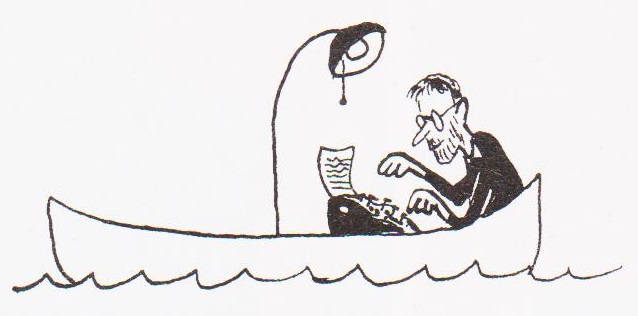Did you know dinkuses, the plural of dinkus, is an anagram of unkissed? Yet there once was many a time when, rushing against deadline to make up a sports page on an evening newspaper’s stone floor, that I kissed the wooden back side of a dinkus, offered to me by a compositor as a way of filling a gaping hole, left by a story which had fallen an inch or so short. In more recent times, I have gathered a small collection of typewriter-related dinkuses, as has Peter Weill (see ETCetera No 109, Summer 2015).
In the meantime, we can always use the scan of a typewriter dinkus when we need one.
Seven years ago, Writing New South Wales tweeted that “dinkus” was a “new word from today”. It was at least 90 years behind the times, possibly as much as 140 years and maybe even 160 years. My own efforts to find the origin of the word dinkus, as I know it, relied in March 2011 on Australia’s Macquarie Dictionary, which said: “A dinkus is a small drawing used in printing to decorate a page, or to break up a block of type. It was coined by an artist on [Sydney’s] The Bulletin magazine in the 1920s, and it is derived from the word dinky, meaning ‘small’.” I now find that in 1952, the Melbourne Herald's head proof reader, Charles Crampton, said there was a printers' embossing tool called a "dinkus-and-die", with a "dinking" tool which fitted perfectly into the die. "Hence we get a 'dinky-die fit'." So from dinkus came the Australian term "dinkie-die", meaning straight and true ("It's not a lie, it's dinkie-die"), as well as the expression "fair dinkum" ("Fair dinkum, I use a typewriter all the time"). The Herald journalist, social commentator and activist E.W.Tipping said, "Printers call a small picture used to fill up a space in the compositor's forme a dinkus, the latter getting its name obviously from it being used to wedge tightly the type."
Wiktionary gets it right by describing dinkus
as “A small drawing or artwork used for decoration in a magazine or periodical”.
In print newspapers in the hot metal days, a dinkus was usually used to give the eyes a
momentary rest from reading a page of “grey matter” – that is, columns of a small
black typeface on a light background. Wikipedia gets it wrong by confining dinkus
to “a typographic symbol which often consists of three spaced asterisks in a
horizontal row … The symbol has a variety of uses, and it usually denotes an
intentional omission or a logical ‘break’ of varying degree in a written work.”
Wikipedia compounds its mistake by adding, “In Australian English, particularly
in the news media, the word refers to a small photograph of the author of a
news article. Outside of Australia, this is often referred to as a headshot.”
Wiki is most decidedly wrong on this count.
Last month (June), The New Yorker featured typewriter
use in dinkuses (it calls them “spots”), one (seen at the top of this post) above a wonderful tribute to the late Roger
Angell (“That Titian of the Typewriter”), written by the incomparable David
Remnick, the other among the regular “spots” that run through the magazine, in
this case showing people writing using all manner of machines and methods.
This last one was not entirely "new", as a similar idea had been used to advertise the Bar-Let portable typewriter in 1934:






No comments:
Post a Comment
I do not accept anonymous comments.
I only allow comments under User IDs provided I know who that person is.
Do not ask me to evaluate typewriters.
Comments must be relevant to the post.
As the author of these posts, I make the decisions about what they contain - it is not open to discussion.